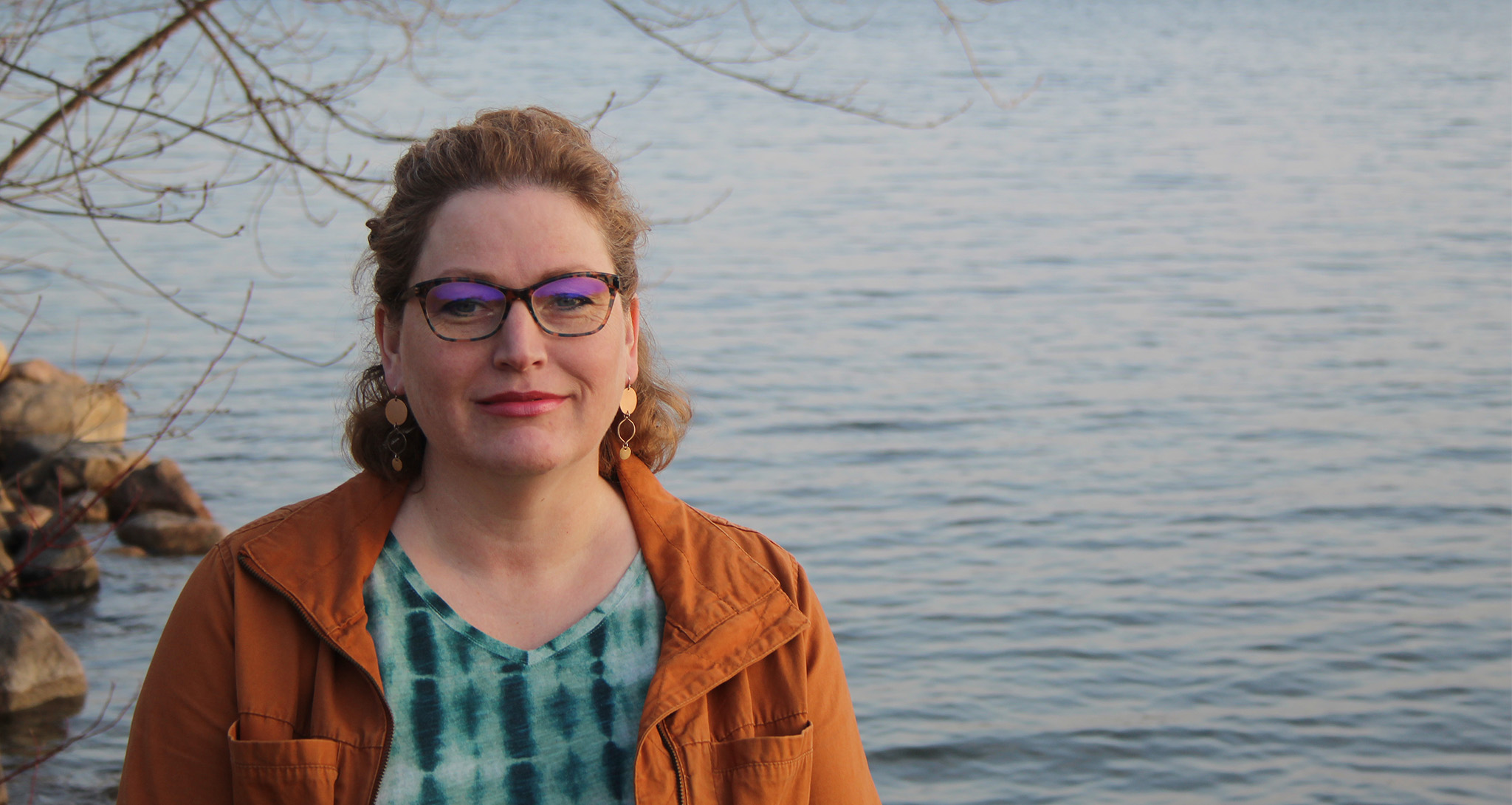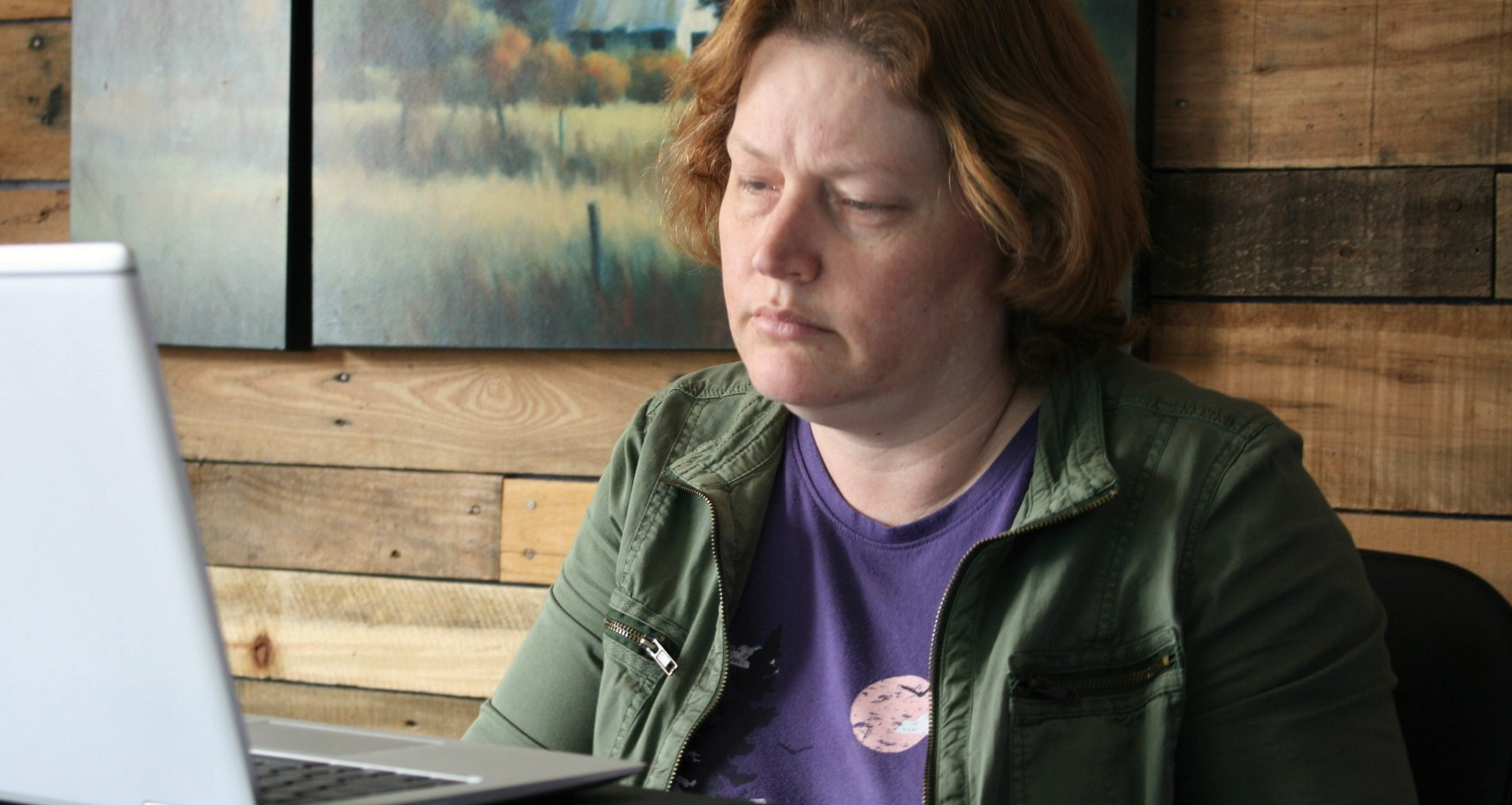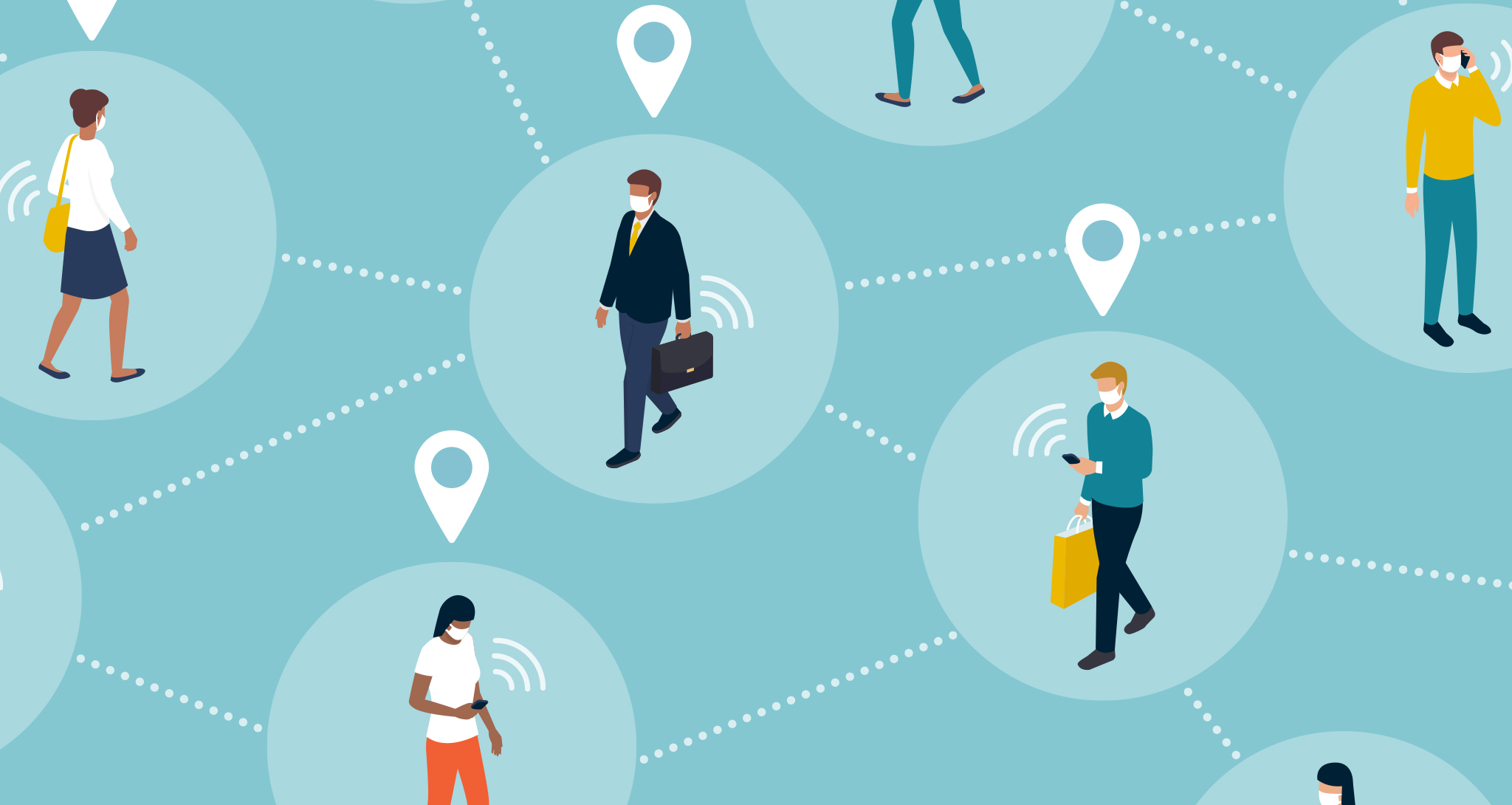

During the pandemic, Lisa Ayres (pictured above) and Danie Thompson spent hours on the phone, talking to Hennepin County residents who’d tested positive for COVID-19. They fielded questions and made sure residents knew how to minimize risk to their family and close contacts.
This process, called case investigation, is a technique that public health has used during infectious disease outbreaks for decades.
During the pandemic, Lisa and Danie talked to Hennepin County residents who'd tested positive for COVID-19 to make sure they knew how to minimize risk.
Before COVID-19, Lisa was a Hennepin County library specialist and Danie was a stay-at-home mom. But they switched gears when the pandemic hit, mobilizing to support the public health response.
“I came on in May 2020, when many library staff had been furloughed for over a month,” says Lisa. “I was very excited to move over and help.” Initially, Lisa supported public health as a COVID-19 case investigator. Within a couple months, she became an epidemiology lead, helping to train new callers and clarify guidance.
Like Lisa, Danie also wanted to serve. “I got my degree in public health quite a while ago,” she says, “but then my husband and I decided to start a family. I have three kids and am big into volunteering. But when COVID-19 hit my volunteer opportunities dissipated. I was looking for something I could still do to help. I took to Google and saw this opportunity for a COVID-19 case investigator.”

Each day, Lisa, Danie, and other members of the Hennepin County case investigation team reviewed a list of people who’d tested positive for COVID-19. Callers then made phone calls, left voicemails, and sent texts. When a caller was able to reach a case (or parent of a minor), they informed them of their privacy rights, collected information to help public health learn about COVID-19, and shared how to isolate and for how long. They also gave residents information to give to people they may have exposed, so that these individuals knew to get tested, be on the lookout for symptoms, and stay home.
People inevitably had questions, especially since guidance was ever changing as experts learned more about the virus. Questions also related to changing circumstances such as the vaccine rollout and the return to school, sports, and daycare.
“We’d try to always be opening the door,” said Lisa. “We wanted to help answer as many questions as we could. We tried to listen to people, meet them where they were at, first, and then give them the best public health guidance we could. We tried to translate what was often complex guidelines into plain language.”
At the end of each conversation, Lisa, Danie, and their colleagues shared how to learn more, including a curated list of resources. “There’s a lot of information out there,” says Danie, “some true and some not true. I pointed them to websites with accurate info.”
One challenge that the case investigators encountered was the large number of people infected with COVID-19.
“We’d log in and see 1,000 people in the queue and know that there were only 10 callers,” says Danie. “Our leadership team reminded us to do what we could, and that what we could is enough. It was important to keep plugging away.”
Another challenge was that COVID-19 was polarizing. “Some people were resistant to the guidance,” says Danie. “They thought they had a false positive.”
Additionally, everyone’s situation was different. “There were no two cases who were identical,” says Lisa. “People had different exposures, questions, understanding, some had school-aged children ..."
Still, these challenges presented opportunities.
“We could help the community in a time that was really stressful,” says Danie, noting that the team didn’t only share public health guidelines; they also pointed people to Hennepin County services. In some cases, people were connected with the Hennepin County essential services team, who provided food, medicine and other things people needed in order to isolate or quarantine.
Lisa believes her interactions gave her the opportunity to improve mental health and restore confidence in public health.
“When we called someone, it was important to not just jump into the interview,” she said. “We wanted to hear from them, we wanted to hear where they were at. That’s how we connect with people. That’s how they listen to you. Part of the role of public health is to support public mental health. Part of supporting public mental health is to hear people and acknowledge where they are at. The connection is key.”
Once that connection was established, Lisa enjoyed deciphering guidance. “I like taking complex things and breaking them down for people to understand,” she said. “These will always be things that are complex and muddy – but they don’t have to be! People are so grateful for concrete information. Confusion chips away at public trust and being able to answer clearly helps people trust public health.”

On April 1, 2022, Hennepin County ended the case investigation portion of its COVID-19 response. But the experience will inform Lisa and Danie’s lives and work.
“It taught me that we all come from different walks of life but, when it comes down it, we’re the same and doing our best,” says Danie. “I also learned that reaching out and helping people is worth it even if you’re overwhelmed. In most aspects of public health there’s more people that need help than you can reach, and you may think, ‘what’s the point?’ But every person we reach is great.”
Lisa said the intense experience made her place more emphasis on self-care. “This is something I should have always done – walk away, take breaks,” she said. “I learned to support my own mental health and that of my coworkers. Taking a break helps you continue to work hard. And more often than not, walking away gives you a better perspective.
Going forward, Lisa plans to further her epidemiology education and stay in public health. “For me the pandemic revealed a silver lining, I learned that this field is a passion of mine,” she said. “I’m very interested in learning more about infectious disease and preventing illness in others.”
Contact tracing to slow the spread
Dylan Ayres